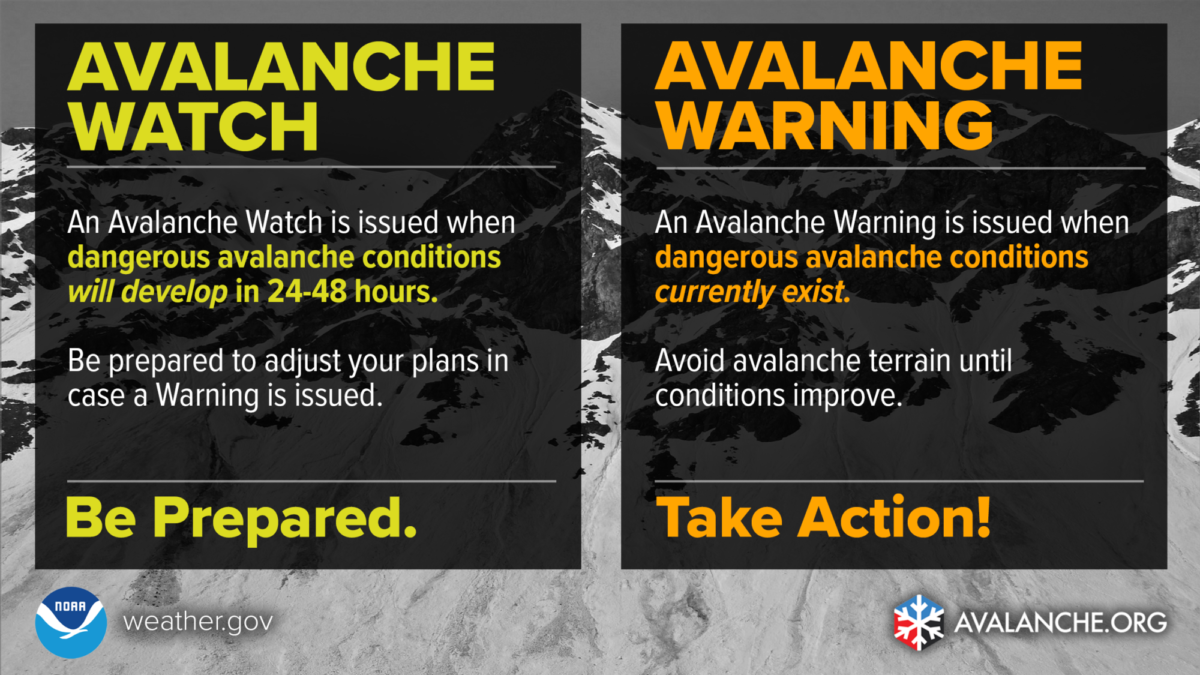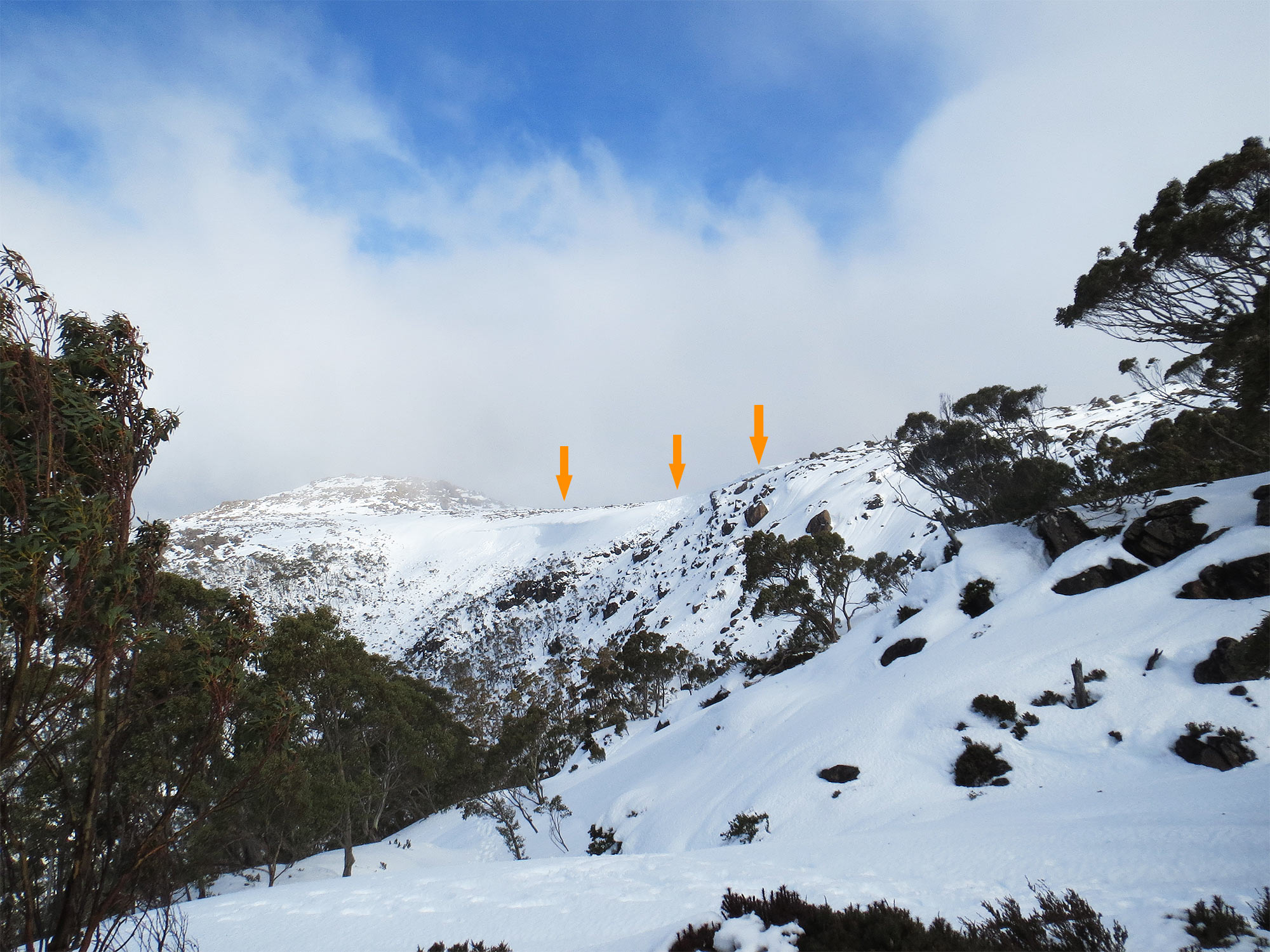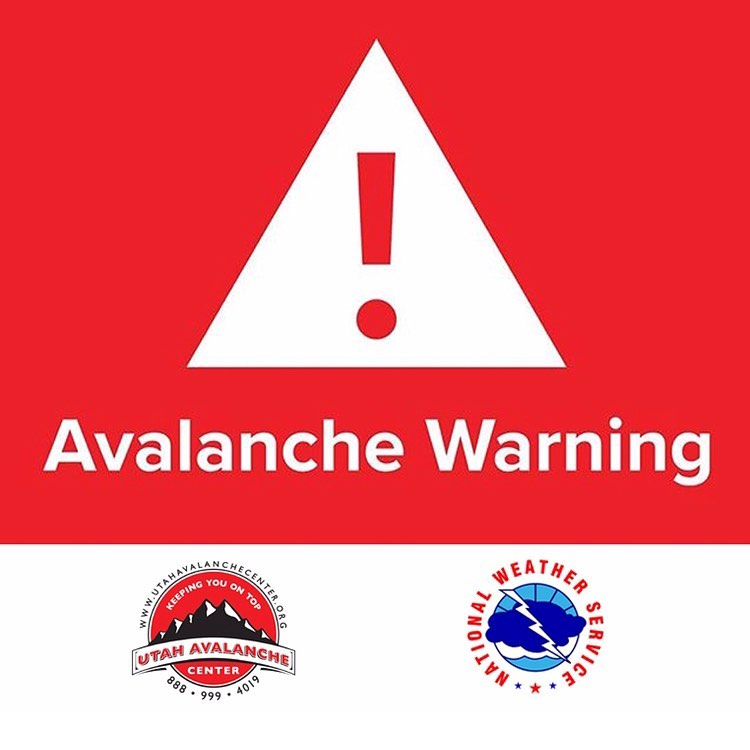Avalanche Warning: Your Ultimate Guide To Staying Safe In The Mountains
Avalanche warning systems play a crucial role in mountain safety, helping adventurers and professionals alike navigate the risks of snow-covered terrains. Whether you're an experienced backcountry skier or a novice hiker, understanding avalanche warnings can save lives. This comprehensive guide delves into the nuances of avalanche warnings, ensuring you're equipped with the knowledge to stay safe in the great outdoors.
In recent years, the frequency and intensity of avalanches have increased, partly due to climate change and growing numbers of outdoor enthusiasts exploring mountainous regions. As such, staying informed about avalanche risks has never been more critical. This guide will provide you with actionable insights, practical tips, and expert advice to enhance your awareness and preparedness.
Our goal is to empower you with the necessary tools and information to interpret avalanche warnings effectively. From understanding the science behind snowpack stability to recognizing red flags in the environment, this article covers it all. Let's dive in and explore how you can minimize risks and enjoy your mountain adventures safely.
Read also:Exciting Nba Showdown Cavaliers Vs Kings
Table of Contents
- What is an Avalanche Warning?
- Types of Avalanches
- Understanding Avalanche Risk Levels
- Avalanche Warning Systems
- How to Read an Avalanche Forecast
- Essential Gear for Avalanche Safety
- Tips for Avalanche Preparedness
- Real-Life Avalanche Incidents
- Avalanche Survival Tips
- Conclusion
What is an Avalanche Warning?
An avalanche warning is a critical alert issued by specialized organizations to inform individuals about the potential for avalanches in specific regions. These warnings are based on a combination of factors, including weather conditions, snowpack stability, and terrain characteristics. The primary purpose of an avalanche warning is to educate the public about current and forecasted risks, enabling them to make informed decisions about their activities in avalanche-prone areas.
Warnings are typically categorized into different levels, ranging from low to extreme, depending on the likelihood and severity of an avalanche occurrence. By understanding these levels, individuals can better assess the risks and take appropriate precautions.
Why Are Avalanche Warnings Important?
Avalanche warnings serve as a lifeline for those venturing into snowy terrains. They provide critical information that helps adventurers avoid hazardous areas, plan safer routes, and prepare for emergencies. Without proper awareness, individuals may unknowingly enter high-risk zones, putting themselves and others in danger.
According to the American Avalanche Association, approximately 25-30 people die in avalanches each year in the United States alone. Many of these fatalities could have been prevented with better awareness and adherence to avalanche warnings.
Types of Avalanches
Not all avalanches are the same. Understanding the different types of avalanches is essential for interpreting avalanche warnings accurately. Below are the most common types:
- Slab Avalanches: The most dangerous type, where a cohesive layer of snow slides down a slope.
- Powder Avalanches: Fast-moving avalanches composed of light, airy snow, often reaching speeds of over 100 mph.
- Wet Avalanches: Slower but heavier avalanches caused by melting snow, often occurring in warmer temperatures.
- Point-Release Avalanches: Avalanches that start from a single point and grow as they descend.
Factors Influencing Avalanche Types
The type of avalanche that occurs depends on several factors, including:
Read also:Discover The Rich Traditions And Global Significance Of Nowruz
- Snowpack structure and stability
- Terrain slope and aspect
- Weather conditions, such as wind, temperature, and precipitation
Understanding Avalanche Risk Levels
Avalanche risk levels are a standardized way of communicating the likelihood and severity of avalanches in a given area. These levels are typically represented on a scale from low to extreme, with each level corresponding to a specific set of conditions and recommended actions.
Risk Levels Explained
Here’s a breakdown of the avalanche risk levels:
- Low: Natural avalanches unlikely; triggered avalanches unlikely.
- Moderate: Some natural avalanches possible; human-triggered avalanches possible.
- Considerable: Natural avalanches possible; human-triggered avalanches probable.
- High: Natural avalanches likely; large avalanches possible.
- Extreme: Widespread natural avalanches certain; large avalanches likely.
Avalanche Warning Systems
Avalanche warning systems are sophisticated networks designed to monitor and analyze snowpack conditions in real-time. These systems rely on a combination of field observations, weather data, and historical records to provide accurate and timely warnings.
Key Components of Avalanche Warning Systems
Modern warning systems incorporate the following elements:
- Weather stations
- Snowpack analysis
- Field reports from experts
- Advanced modeling software
Organizations such as the Colorado Avalanche Information Center (CAIC) and the European Avalanche Warning Services (EAWS) play pivotal roles in issuing these warnings. Their expertise ensures that the information provided is reliable and actionable.
How to Read an Avalanche Forecast
Reading an avalanche forecast requires a basic understanding of the terminology and structure used by warning centers. A typical forecast includes information on:
- Risk level
- Problem types (e.g., wind slabs, persistent weak layers)
- Terrain and elevation zones
- Weather outlook
Steps to Interpret an Avalanche Forecast
Follow these steps to make the most of an avalanche forecast:
- Identify the risk level for your planned area.
- Understand the specific problems listed in the forecast.
- Consider the terrain and elevation you’ll be traveling through.
- Plan your route accordingly, avoiding high-risk zones.
Essential Gear for Avalanche Safety
Equipping yourself with the right gear is crucial for avalanche safety. Here are some must-have items:
- Avalanche Beacon: A device that helps locate buried individuals.
- Probe: Used to pinpoint the exact location of a buried person.
- Essential for digging out victims quickly.
- Avalanche Airbag: Provides buoyancy and reduces the risk of being buried deep.
Why Gear Matters
Proper gear can significantly increase your chances of survival in an avalanche. For instance, studies show that avalanche airbags reduce the likelihood of being buried completely by up to 50%. Investing in quality gear is a small price to pay for peace of mind.
Tips for Avalanche Preparedness
Being prepared for an avalanche involves more than just having the right gear. It also requires knowledge, training, and a proactive mindset. Here are some tips to enhance your preparedness:
- Take an avalanche safety course.
- Always check the latest avalanche forecast before heading out.
- Travel with a partner and establish a communication plan.
- Practice using your avalanche gear regularly.
Red Flags to Watch For
Being able to recognize warning signs in the environment is crucial. Watch out for:
- Recent avalanche activity in the area.
- Whumphing sounds or cracking snow.
- Heavy snowfall or wind loading.
Real-Life Avalanche Incidents
Examining real-life incidents can provide valuable insights into the dangers of avalanches and the importance of heeding warnings. One notable example is the 2012 Tunnel Creek avalanche in Washington, USA, which claimed the lives of three experienced skiers. This tragedy underscored the need for constant vigilance and adherence to safety protocols, even for seasoned adventurers.
Lessons Learned from Past Incidents
By studying past incidents, we can learn important lessons:
- Never underestimate the power of an avalanche.
- Always prioritize safety over adventure.
- Stay informed and adapt plans as conditions change.
Avalanche Survival Tips
In the unfortunate event of being caught in an avalanche, knowing how to respond can make a difference. Here are some survival tips:
- Try to move to the side of the avalanche path.
- Release your gear to reduce drag.
- Swim with the flow to stay near the surface.
- As the avalanche slows, create an air pocket around your face.
Post-Avalanche Actions
If you witness someone caught in an avalanche, act quickly:
- Start searching immediately using your beacon.
- Mark the last seen point to guide your search.
- Call for help if necessary.
Conclusion
Avalanche warnings are an indispensable tool for anyone venturing into snow-covered terrains. By understanding the types of avalanches, interpreting risk levels, and preparing with the right gear and knowledge, you can significantly reduce your chances of becoming a victim. Remember, safety should always be your top priority when exploring the mountains.
We encourage you to share this article with fellow outdoor enthusiasts and leave a comment below sharing your thoughts or experiences. Additionally, explore other resources on our site to deepen your understanding of avalanche safety. Together, we can create a safer outdoor community.


